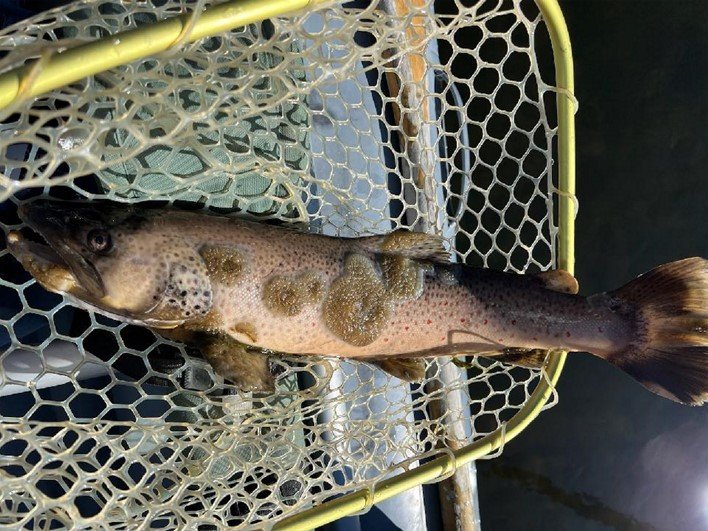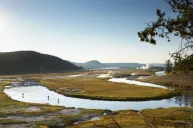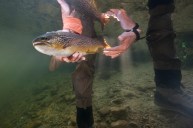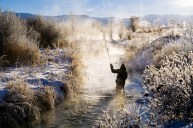The Jefferson River Basin in Montana makes up some of the most iconic and robust trout water in the West. That will change, though, if something isn't done soon to get ahead of two problems: a mysterious disease killing the trout and unexplained dips in water levels.
Let's be clear: There has been a significant decline in the rainbow and brown trout fishery for at least the last 10 years, Tana Nulph, associate director of the nonprofit Big Hole Watershed Committee, tells Wide Open Spaces.
But Montana Fish, Wildlife, and Parks conducted a fish count this last spring, and the numbers revealed the lowest recorded trout population since counts began in the 1960s.
"Typical brown trout densities in the Big Hole range from 900-1,100 fish per mile. Currently, we are 300 per mile," Montana Fish, Wildlife & Parks biologist Jim Olsen told Wide Open Spaces. Olsen is spearheading a fish mortality study on the issue (more on that in a minute).
On top of historically low counts, many local Montana fishing guides are reporting lesions, deformities, and overall illness in the trout they're pulling from Montana's southwest Jefferson Basin waterways, which include the Big Hole, Beaverhead, Ruby, and Jefferson rivers. Some say it appears to be a fungal infection, but nobody has any confirmed answers.
So, what exactly is going on?
What's Killing the Trout?
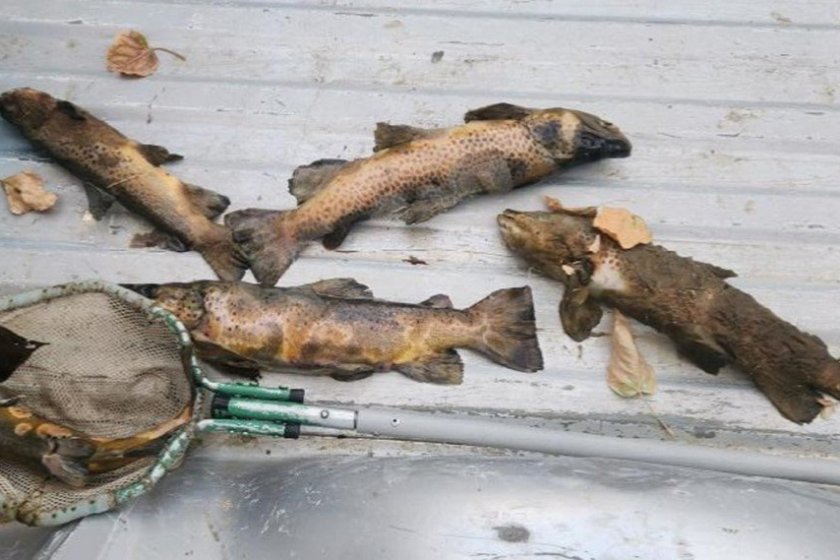
Photo from Montana FWP
It's no secret water levels come into play here.
Some point to low water levels from water withdrawals for irrigation by nearby ranchers, which—especially when combined with drought—contribute to population declines. The lower the water, the higher the water temperature.
But ranchers say they have already been taking less than their water rights to take care of their land and livestock.
Nulph said experts have stated these population declines are above and beyond what would be expected from just low water associated with irrigation withdrawals.
"It's easy to point fingers and say that this decline in the trout populations is because of ranching or angling," Nulph tells Wide Open Spaces. "But ranching and angling have been taking place in the Big Hole for decades, and this issue is relatively new."
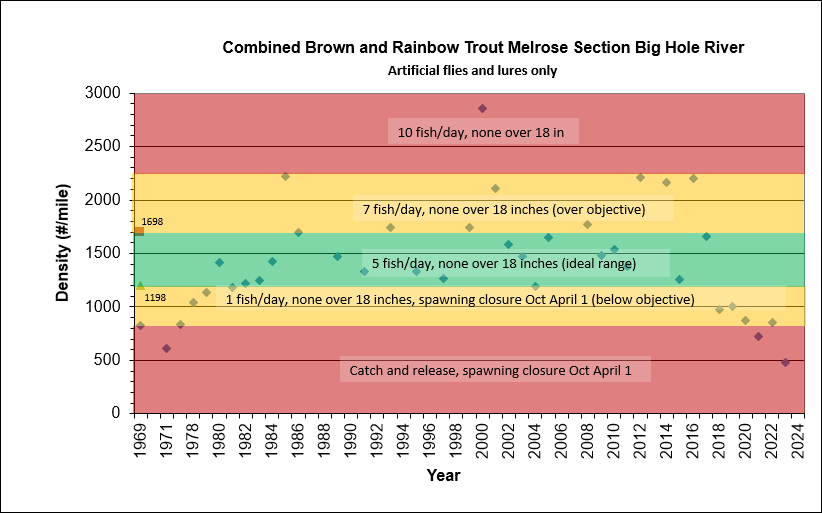
Photo Courtesy of the Big Hole River Foundation
And, indeed, while water levels are low, the problem predates low flow, Olsen said. "Drought conditions have likely contributed to trout declines, but the declines began in above-average water years, and current numbers are below what we would expect given drought conditions alone," he said.
The bigger problem: Trout needs cold, clear water. According to Montana's fisheries biologists, the high temperatures and low flows the state has seen this summer stress trout. This makes them more susceptible to disease and makes juveniles less likely to reach adulthood to complete the reproduction cycle.
Nulph also points to influences from "changes to precipitation patterns, overstocked thirsty forests, a doubling of angling pressure in the last 10 years to 120,000 angler days (and all the bug repellent, sunscreen, brake dust, and other associated chemicals that come with them)."
Is Anyone Doing Anything About It?
Locals in the area have been working at the grassroots level for years to sound the alarm on the sick and dying fish, as well as noticeable water declines they've been encountering on the water—which, many argue, directly and negatively impact the trout populations.
One such alarm-raiser is the father-and-son team of Wade and Craig Fellin, co-owners of the Big Hole Lodge. Together, the Fellins have spearheaded the effort to engage the state government in finding a solution.
They founded Save Wild Trout, a growing coalition of anglers, river advocates, concerned citizens, businesses, guides, and outfitters with the common goal to save Montana's wild trout population and generate awareness about core issues affecting cold-water fisheries and healthy rivers. They also banded together more than 30 fishing guides and business owners to pen a letter to Montana Gov. Greg Gianforte urging immediate action.
"We have an emergency in (Southwest) Montana's rivers, and we need to act immediately to avoid a total collapse of those trout fisheries," the letter read. "We believe severe economic harm, business closures, and job losses in the region and throughout Montana are imminent if we don't take action to both understand the causes and to develop solutions."
Now, as trout populations reach record lows, the state government is finally listening.
The fact that Olsen's team was able to put resources toward studying what's going on says a lot. Montana Fish, Wildlife, and Parks will work with Montana State University during the study, which will include studying the mysterious disease affecting trout and how it plays a role in the population trends that are being observed in both adult fish and juvenile fish mortality.
The Beaverhead, Madison, and Ruby rivers, which have all experienced declines in trout populations similar to Big Hole's, will be included in Olsen's proposed study, which will include data analysis, specialized lab work, and studies of tributaries in addition to the Big Hole's main stem.
So, What's Next?
Nulph says communal sacrifices, such as changing how water is retained and released out of the watershed, could help. "If we all give up a little bit to benefit the river, it will be a better place for everyone now and in the future," she said.
Montana FWP and Montana State University's combined research efforts will explore how increased angler pressure, decreased water quantity, decreased water quality, disease, and climate change are all contributing to the trout population changes in the Jefferson River Basin region
What's left to be determined is what combination of these factors is at play and how to remedy the situation before the brown trout populations are irreversibly destroyed in Southwest Montana.
All of this leaves more questions than answers.
What, exactly, is killing the brown trout?
Why are they being affected more than any other trout species when brown trout are widely understood to be the most temperature- and pollution-tolerant variety of trout?
And why haven't other native trout populations increased to fill the void left by these declining browns?
READ MORE: 33,000+ Invasive Lake Trout Successfully Removed In Montana Fishing Tournament
